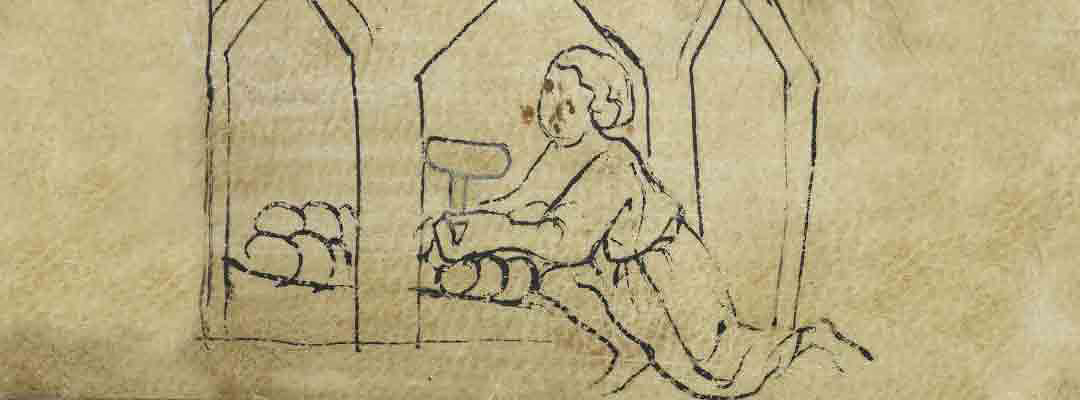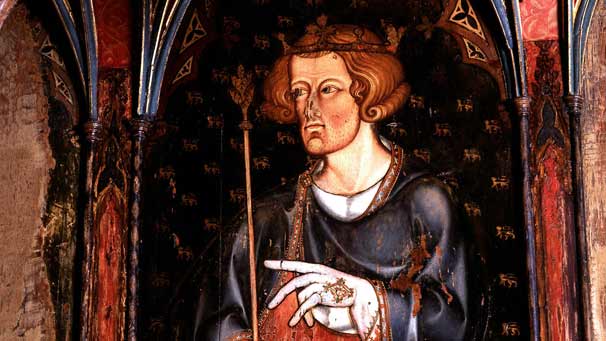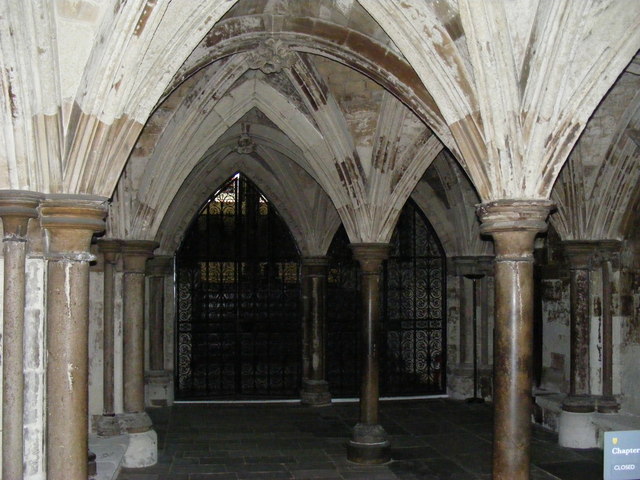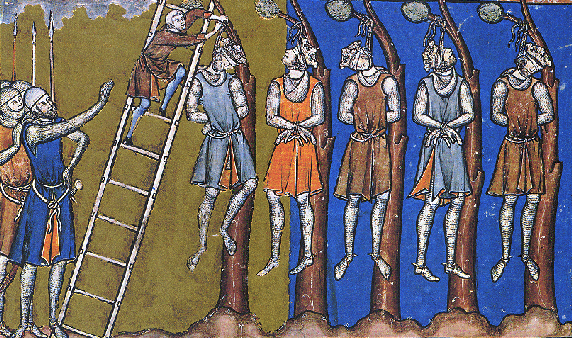It was April 1303. Nobody noticed Pudlicott and his accomplices, as they skated with £100,000 (around £30,040,000,000.00 today) in stolen goods from the King’s crypt beneath Westminster Abbey. Their take included jewels, coins, and artifacts.
Pudlicott had planned, waited and sprung his plan with plenty of help, all of which he paid off, but nothing would stop him from later confessing his crime like an idiot. Was it pride? Anyway, it was dumb.
He could have escaped execution and moved to the south of France if he’d not been such a dolt. This is his story…
Richard of Pudlicott

(A drawing of Pudlicott robbing the King | source: english-heritage.org.uk)
Friends called him Dick. In 1303 he was a wool merchant in England and a former palace clerk, down on his luck.
For context, 1303 was the same year France’s PhillipIV and England’s Edward I signed the Treaty of Paris, which returned a chunk of France, Gascony, to England. It’s also the year the king was away in Scotland battling Mel Gibson who had raised an army of revolutionaries fighting for peace. We’ll come back to that.
Back to Pudlicott; he was in a bad way. He’d managed to put himself in debt with the Jewish money-lenders. This was before Edward sent them packing, so they were still expecting him to pay up.
To get them off his back, and to put his life together, Pudlicott hatched a plan to rob the biggest vault he knew; the king’s. He figured it would be easy with the king away. He just needed a little time, some help from a few inside guys, and a handful of fast-growing seeds…
King Edward I

(source: castlewales.com)
At six foot, two, Edward Longshanks as some folks called him, was an imposing man. It didn’t help that he was a hothead.
Although history regards Edward as the king who established parliament as a permanent institution and restored royal authority, he is also the king who order the execution of 300 Jewish heads of household, tried to reform the rest, then expulsed them in 1290. That expulsion lasted until 1656. (What a douche.)
When the robbery of Westminster Abbey took place, Edward was in Scotland. He’d left Scotland in 1296, considering the conflict with that territory resolved, but it wasn’t.
A former Scottish knight named William Wallace, played by Mel Gibson, had raised a resistance in Scotland. Edward returned to fight Wallace’s rebellion, a fight that kept Edward away for long periods of time.
Who knew Mel Gibson was somehow connected to the 1303 robbery of Westminster Abbey? (Not a verified historical fact.)
The Heist

(The Chapter House where the theft occurred | source: tomhalltravel.com)
The success of the heist came down to negligence on the part of the palace security, but also hung on palace corruption and the careful planning of Pudlicott. Months before the heist, Pudlicott planted hempseed along the side of the wall where he intended to break in. This created a cover for his activities.
Meanwhile, he enlisted some partners in crime. Among the accused was William Palmer, deputy keeper of the fleet prison who sheltered the burglars in the King’s Palace; John of St. Albans, a mason; John Rippingdale, known as ’the chaplain,” a man who had a reputation of breaking into churches, and a number of goldsmiths and people to sell the goods for Pudlicott.
Hiding in the now-mature weeds he’d planted as seeds, Pudlicott spent nights picking away at the exterior of the palace. With persistence, one night he managed to get in. The room was full of jewels, coins, and valuable artifacts.
After two days of hiding, Pudlicott escaped with his take. It was as much money as the king collected in taxes for one year at the time. If my math is correct above, £30-billion a year isn’t a bad tax collection.
Aftermath

(source: quora.com)
Edward caught word of the theft when palace possessions turned up in pawn shops, houses of prostitution and fishing nets. The palace rounded up dozens of accused. They executed five men and sent ten monks to the tower.
Pudlicott attempted to claim immunity as a former clerk, but they eventually tried him. When it came right down to it, he confessed the story of how he did it. He even attempted to save his other accomplices by swearing that he worked alone. The writing for him, however, was on the wall.
They hung Pudlicott in 1304 for his crime. Actually, a door might make a better metaphor than a wall. Legend is, they nailed his flayed skin to the door of the Abbey as a warning to others. Even if it’s not true, the fact that someone started that rumor means people knew of Pudlicott’s crime. It may also mean that flaying skin then hanging it was sorta normal.
Pudlicott should’ve stayed the course of “wasn’t me.” His brave attempt to save his fellow thieves by confessing the crime showed courage, but he could’ve left long before that.
If he had only packed up his take, then moved far away, he could’ve retired on a nice piece of land far from Richard. England was tied up in events that would lead to the Hundred Years War. It wasn’t like they had time to chase down petty thieves who steal a year’s worth of taxes.
Oh yeah, in case you’re still confused about Mel Gibson’s involvement in all this, somehow you missed the movie Braveheart. Time to catch up on your movie history. Freedom!

(Mel Gibson as William Wallace in Braveheart | source: europapress.es)

